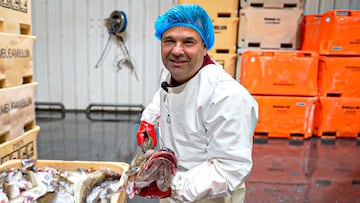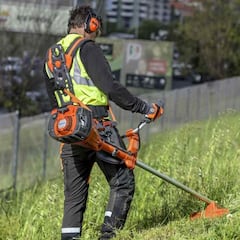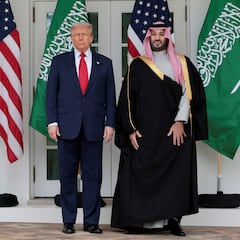José Elías, billionaire entrepreneur according to Forbes magazine: “Setting up a supermarket costs $350,000. And it only leaves me with $35,000 in profit per year”
The businessman summarizes the experience, in data, of having almost 300 supermarkets - the management of workers, salaries and profits.

When Spanish entrepreneur José Elías talks about the realities of running La Sirena—one of Spain’s largest frozen-food chains—he doesn’t sugarcoat the numbers.A year ago, he even traveled beyond the Arctic Circle to fish for cod with his own suppliers, enduring freezing temperatures just to understand the process from sea to store.
That firsthand look at the cold-water catch, the stress of the work, and the challenges of distribution shaped the data he’s now sharing publicly.
How much does it really cost to open a supermarket?
According to Elías, launching a single La Sirena supermarket is far from cheap.
“It costs €300,000 to open one store,” he wrote on X.And the annual profit? Surprisingly small.
“Each location only brings in about €30,000 a year.”
That translates to roughly $350,000 per store and $35,000 per year, respectively.
He also hires at least four employees per store—and still accounts for the reality that 7% of his workforce may be out on medical leave at any given moment, while he continues paying full salaries. Add to that the fact that one out of every ten stores will eventually close.
“When you explain it like that,” he says, “people start to understand the risk.”
Si tú tuvieras 300.000€ ahorrados, ¿los invertirías en un negocio que gana 30.000€ al año?
— Jose Elías Navarro (@jose_elias_nvr) November 17, 2025
Montar un supermercado La Sirena cuesta 300.000€. Y solo me deja 30.000€ de beneficio al año.
Cuando les hago esa pregunta, la mayoría dice que no.
Y lo entiendo.
Con esos 300.000 €…
Why 300 stores doesn’t mean massive personal profit
Elías now oversees almost 300 La Sirena locations across Spain. On paper, multiplying €300,000 (c.$350,000) in investment by 300 stores might look like massive wealth.
But he pushes back on that perception.
“People ask why I need to earn so much money,” he explains.His answer is blunt: because it takes capital—and constant decision-making—to keep a system this size running.
Running a national chain means:
- About €9 million (c.$10.3 million) in total investment exposure
- 1,200 employees to manage
- 300 different stores with unique operational problems every day
“Behind every euro of profit,” he says, “there’s risk, stress, and difficult decisions.”
Behind the numbers: 1,200 families, 300 communities
For Elías, the point isn’t just financial.
Each store represents workers, partner suppliers, and families depending on steady income. Each location supports a town with access to affordable frozen foods—from fish and vegetables to prepared meals and ice cream.
And La Sirena is only one part of his growing business portfolio.
It’s a profitable one—but also the engine that allows him to diversify into new ventures and continue reinvesting, a process he has openly described in recent posts about how he manages his capital.
In one of those, he explained that while Forbes may list him as a billionaire, he only has about $300,000 in his bank account. The rest of his wealth is tied up in his businesses that he has no interest in liquidated.
Forbes dice que valgo millones. Pero en mi cuenta personal tengo menos de 300.000€.
— Jose Elías Navarro (@jose_elias_nvr) November 12, 2025
La gente no distingue entre patrimonio y liquidez. Creen que si Forbes dice que vales X, es que tienes X en la cuenta. Pero no funciona así.
Yo tengo empresas que valen dinero. Eso es…
“That’s why I didn’t like the Forbes wealth ranking at first. It gives an unrealistic image,” he wrote in recent post. “I don’t have liquidity. I have the money I need to live. The rest is reinvested.”
Related stories
Get your game on! Whether you’re into NFL touchdowns, NBA buzzer-beaters, world-class soccer goals, or MLB home runs, our app has it all.
Dive into live coverage, expert insights, breaking news, exclusive videos, and more – plus, stay updated on the latest in current affairs and entertainment. Download now for all-access coverage, right at your fingertips – anytime, anywhere.


Complete your personal details to comment